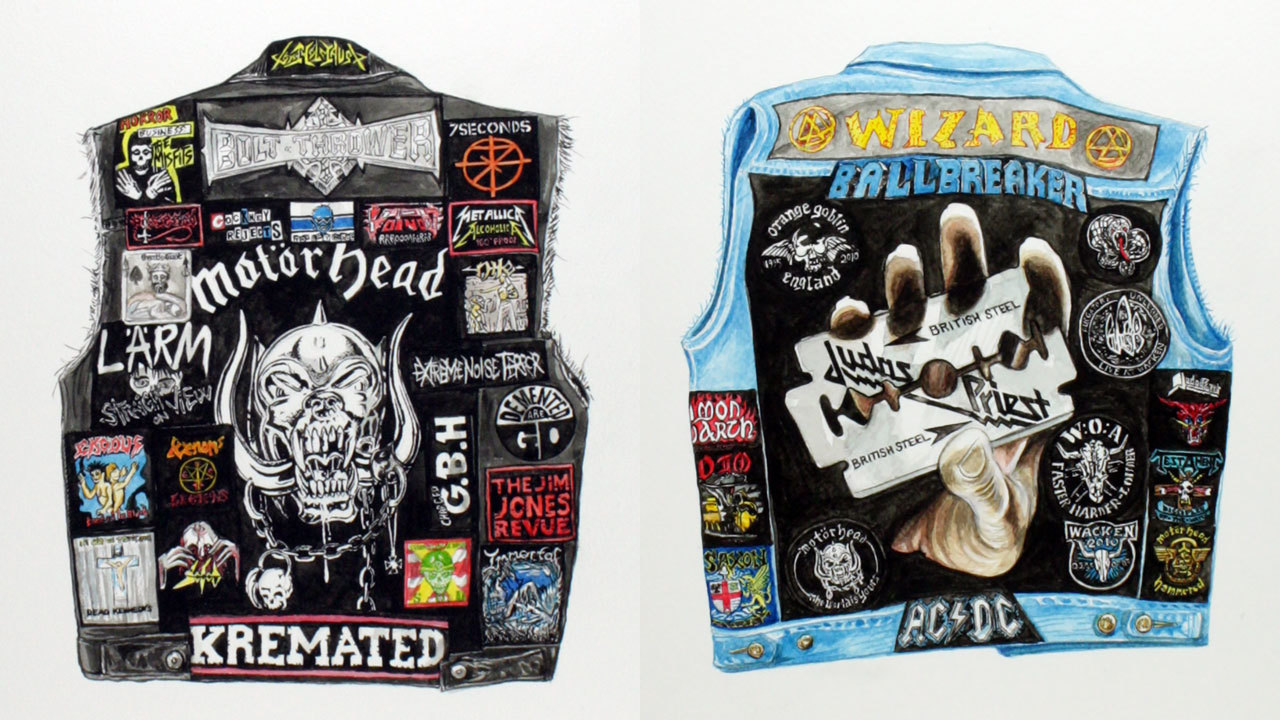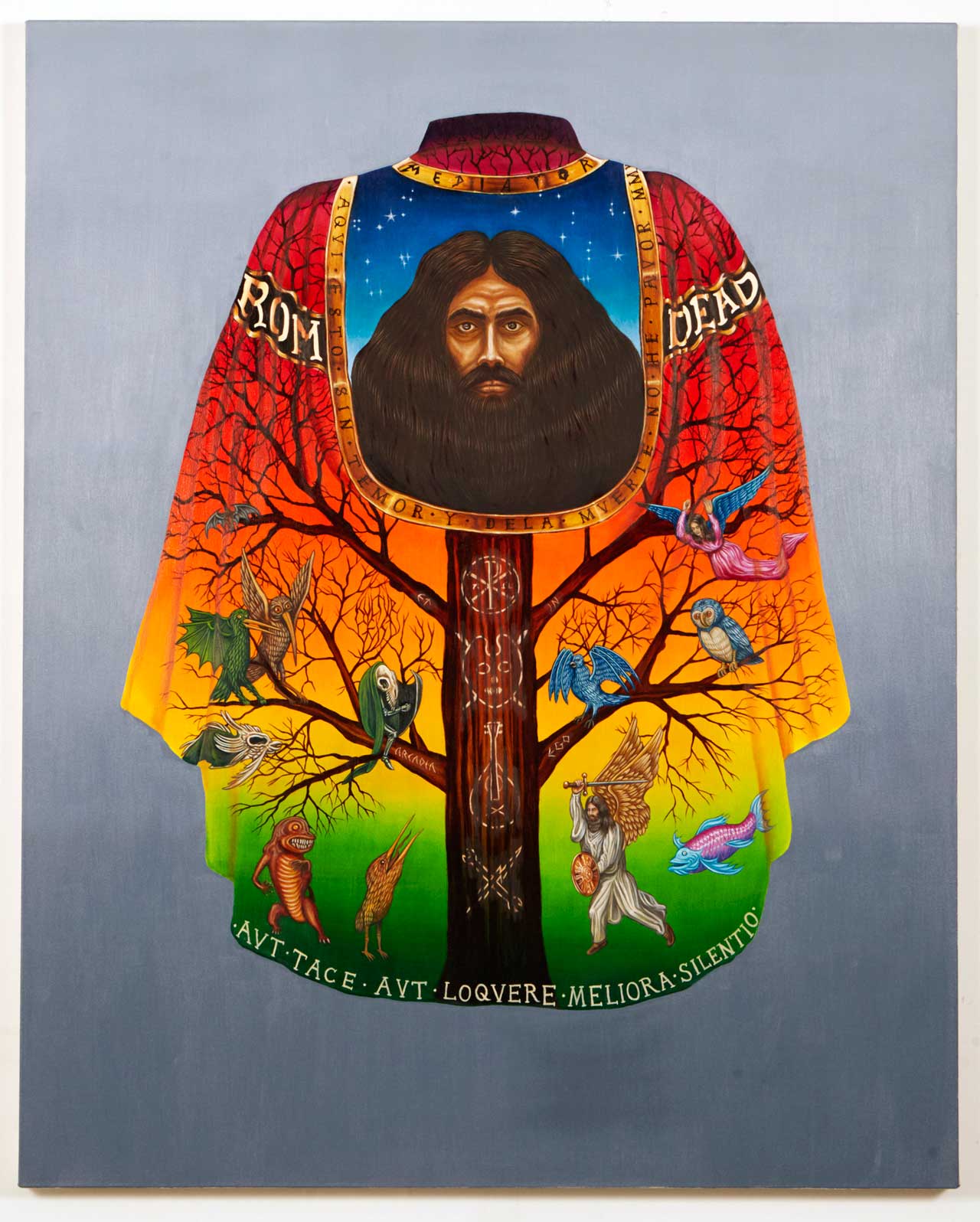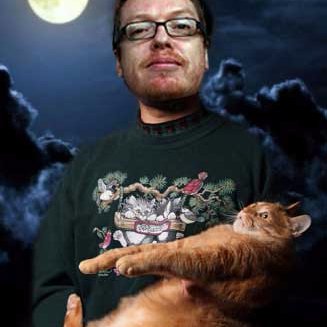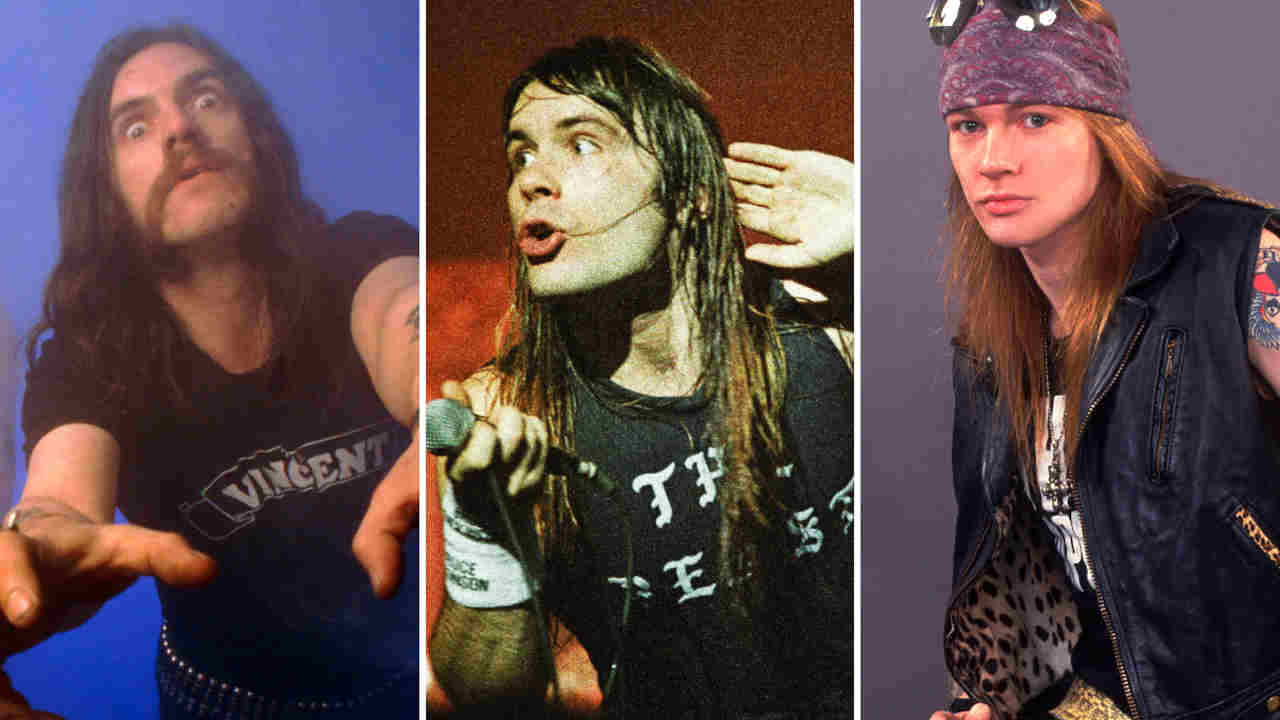Where Dutch still life painting meets Heavy Metal: The Art of the Battle Jacket
As an exhibition of stunning paintings of heavy metal battle jackets opens in London, we spoke to the man behind the brush

“Battle jackets are full of images and symbols connected to contemporary heavy metal culture,” says Tom Cardwell. “But many of them have roots in much older image traditions.”
Tom should know. Apart from being a veteran battle jacket wearer, he’s a University lecturer, a painter, and a researcher currently studying for a PhD project which uses painting to examine the customised cut-offs worn by heavy metal fans. His thesis is entitled Still Life And Death Metal: Painting The Battle Jacket.
With an exhibition of his paintings now open in London, we spoke to Tom, and asked him to explain the thinking behind the show.
What’s the origin of the battle jacket?
In an immediate sense battle jackets most likely developed from different strands of motorcycle culture. Both the ‘uniform’ style jackets of the patch clubs (e.g. Hells Angels) that formed post WW2 and the more freely customised leather jackets of the rockers have strong similarities with metal fans’ jackets. There was probably also an influence of the 1960s psychedelic counterculture as this also featured patches sewn on to garments, and the hippy music scene filtered into the beginnings of heavy metal. Looking more broadly however, there are long traditions of personal customised costume in folk costume, dating back at least to the middle ages. Both heraldry in the form of military clothing and morris or jesters’ costumes can be seen to prefigure more recent subcultural customisation, and there are many other examples such as the hand-sewn button suits of the Pearly Kings and Queens.
How did you get interested in battle jackets?
I’ve been a metal fan since the late 1980s, and used to make my own jackets back then. I was interested to see that the practice of making battle jackets has had a kind of resurgence since the early 2000s and is now being taken up by an increasingly diverse range of fans. As an artist I explore objects with cultural significance and I am interested in symbols in contemporary culture, how they are open to many different levels of meaning. Skulls have been used as ‘vanitas’ motifs and warning signs for thousands of years, and various ancient cultures used snake or dragon motifs. Many metal album covers make reference to art history - the themes of horror, death and violence have long been subjects for painters.
Sign up below to get the latest from Classic Rock, plus exclusive special offers, direct to your inbox!

Why paint them?
Painting allows us to look at things in a different way - it’s not really about making a copy of something, but rather translating it into a different form. Painting is a very slow process, it forces you to look at the subject very carefully and to see things you’d miss otherwise. As a painter I have always been influenced by Dutch still life painting. I love the detail of those works and the way that they elevate everyday objects to make them the focus of our attention. These things become players in mysterious narratives which could only exist in paintings. In this sense painting is a great way to examine battle jackets - to consider what wonderful and strange things they are.
How do you approach each new painting? Are they based on real jackets?
The show includes a series of small watercolour paintings which are based on close observation of real jackets belonging to metal fans. I have been interviewing fans over the past couple of years about their jackets, and some of these responses as well as photographs of the fans will feature in the exhibition. It has been important for me to consider what those who make the jackets themselves say about them. I’m interested in the ways in which the jackets are autobiographical, reflecting aspects of individual identity as well as wider connections to metal subculture. The exhibition also includes a series of larger oil paintings that are more imaginative. These focus on fictional garments and objects that relate to the battle jackets, but also encompass the wider range of costume and clothing traditions that I mentioned earlier, as well as references to painting history.

What do you hope people will get from the exhibition?
For those who are not familiar with heavy metal I hope that they’ll see that there is a richness and diversity to metal culture that is visually expressed in the jackets. I also want people to start to see connections between metal imagery and historic cultures, to realise that it’s not only a contemporary genre. For me the jackets themselves are incredible objects that show skill, dedication and commitment from their makers. I hope that the paintings celebrate all of this as well as adding something mysterious into the mix.
Why haven’t other genres of music taken up the idea of battle jackets? It’s very rock-centric.
There’s been an interesting phenomenon recently whereby a number of designer and high street fashion labels have been producing garments featuring metal-style patches. These have been worn quite a lot by those in the hip hop and club scenes, so there is a kind of migration of the style happening. I guess this is pretty frustrating to metalheads as it can seem like a kind of ripping-off of metal without the meaning, but they do say that imitation is the sincerest form of flattery so perhaps it’s not all bad!
- Black Sabbath launch Supreme clothing line
- Bloodstock 2016: Patchwatch photo gallery
- Iron Maiden: The T-Shirts of the Beast
- Read Classic Rock, Metal Hammer & Prog for free with TeamRock+
Battle jackets have always been popular amongst German football fans. Why do you think this is?
Yes I’ve noticed that! It seems that they apply football club patches, pennants etc. in the same way that metalheads use band patches. Perhaps it came from metal - Germany is a pretty serious metal nation - but I don’t know for sure. Perhaps it’s the biker influence again. That’s one of the great things about visual culture - you get these cross-fertilisations occurring which result in new and rich forms emerging.
Do you actually wear a battle jacket? If yes, what bands are on it?
I do. The one I’ve got now mainly features bands that I was into when I first listened to metal - it’s kind of nostalgic I suppose. So there’s a lot of Bay Area thrash bands on there - Exodus, Testament, Megadeth, Metallica etc. I’ve got a patch from the 1987 Damage Inc. tour with my favourite artwork that Pushead did for the band. I’ve also got quite a lot of Maiden patches as well as some newer bands like Mastodon and the young thrash band Lost Society who I saw in their native Finland. There’s also a few punk/hardcore patches on there. I generally try to stick to bands that I’ve seen live when it comes to patches.
Tom Cardwell’s exhibition Bad Patch is on now at Wimbledon Space, Wimbledon College of Arts, Merton Hall Road, London, SW19 3QA. It’s open Monday-Friday between 10am and 5pm, and runs until April 7.

Online Editor at Louder/Classic Rock magazine since 2014. 39 years in music industry, online for 26. Also bylines for: Metal Hammer, Prog Magazine, The Word Magazine, The Guardian, The New Statesman, Saga, Music365. Former Head of Music at Xfm Radio, A&R at Fiction Records, early blogger, ex-roadie, published author. Once appeared in a Cure video dressed as a cowboy, and thinks any situation can be improved by the introduction of cats. Favourite Serbian trumpeter: Dejan Petrović.
